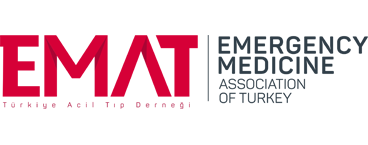Are scoring systems sufficient for predicting mortality due to sepsis in the emergency department?
Merve Gunes Ozaydin1, Ozlem Guneysel1, Fatma Saridogan1, Vehbi Ozaydin2
1Dr Lutfi Kirdar Kartal Training and Research Hospital, Istanbul, Turkey
2Istanbul Medeniyet University, Goztepe Training and Research Hospital, Istanbul, Turkey
Keywords: Sepsis; Septic shock; Scoring systems; SOFA; SAPSII; MEDS; Lactate; Emergency medicine
Abstract
Objectives: Scoring systems have been used to risk stratify in intensive care units (ICU), but not routinely used in emergency departments. The aim of this study was to determine accuracy for predicting mortality in emergency medicine with Sequential Organ Failure Assessment (SOFA), Mortality in ED Sepsis (MEDS) score and Simplified Acute Physiology Score (SAPSII).
Methods: This is a prospective observational study. Patients presenting with evidence of sepsis were all included. SAPSII, MEDS, and SOFA scores were calculated. Analysis compared areas under the receiver operator characteristic (ROC) curves for 28-day mortality.
Results: Two hundred patients were included; consisting of 31 (14.3%) septic shock. 138 (69%) severe sepsis and 31 (15.5%) infection without organ dysfunction. 53 (26.5%) patients died within 28 days.
Area under the ROC curve for mortality was 0.76 for MEDS (0.69–0.82), 0.70 for SAPSII (0.62–0.78); and 1.68 for SOFA (0.60–0.76) scores. Pair wise comparison of AUC between MEDS, SAPSII, SOFA and Lactate were not significant.
Conclusion: According to our results; SOFA, SAPSII and MEDS were not sufficient to predict mortality. Also this result, MEDS was better than other scoring system.

